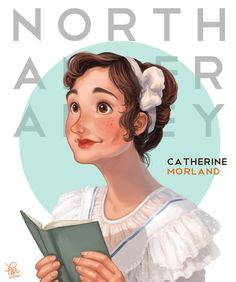Happy never-endings
What do you call them? Are they comic books or are they graphic novels?
I kind of like both terms. I tend to say "graphic novel" because I took a course called "Graphic Novel" and that just stuck with me. When you want to discuss them in a professional or academic setting, you can't beat it. But if you want to convey a sense of fun, excitement, and adventure, then you can't go wrong with "comic book." And what I'm trying to say is that Fables combines elements that both terms evoke: it's a great adventure story and thought-provoking at the same time.
I began reading the series in 2009-ish, when I had to read the first volume (Legends in
Exile) for class. First published in 2002, Fables shares its most fascinating element with the popular show Once Upon A Time: all of our favorite fairy tale characters existing in modern times are working together to return home. It's kind of an obviously brilliant move, as it taps into our collective obsession with classic fairy tales. We re-vamp them and adapt them over and over. Bill Willngham, author of Fables, decided to strip the stories bare and focus instead on some of the most iconic characters in literary history. Obvious. And brilliant.
The main thrust of the overall plot is this: Snow White and King Cole run the Fable community, which mostly consists of soothing bruised egos and trying not to let the "mundies" (i.e., muggles) onto the fact that they exist. The Fables are refugees who had to flee their homelands (a sort of parallel universe of Europe). Bigby Wolf, the same wolf that terrorized Little Red Ridinghood (who is curiously absent) and the three pigs, is the Fables' policeman. Jack (of giant-killing fame) has just informed him that Rose Red has gone missing. And since she's Snow White's little sister, Snow decides to keep an eye on Bigby while he investigates. Who could want to do in Rose Red? Black Beard? The gingerhouse witch? The devious Prince Charming, Snow's ex-husband and general drifter? It all culminates at the annual Remembrance Ball, where Fables relive their desperate escape from the terrible Adversary - the empire that drove them out of their rightful homes - and express hope for the future. Of course, if people are trying to off Fables, there may not be much of a future.
That's all just the first volume. Willingham has mastered the art of weaving character study in with story, creating a vivid world where the struggles of immortal, well-loved fictional beings (some of them magical at that) become real and familiar to us. So far, over the course of 18 volumes, he has expanded on themes of war, loss, revenge, the power of belief, and the unseen consequences of even the most noble intentions. Fables may ignore the mundies around them, but they fall prey to the most human flaws - arrogance, caprice, ignorance. It's how they work through these hurdles - personal or otherwise - that endears us to them and makes us hope for their success.
With the nineteenth volume coming out in a few weeks, I can hardly wait to see what's next in the Fables journey. Look, if you're a reader of either novel - prose or graphic - you are going to want to check this out. In a way, it's like returning to the beginning: most of us started by reading fairy tales and folk tales; this is just the grown-up version.


Comments
Post a Comment